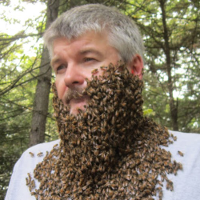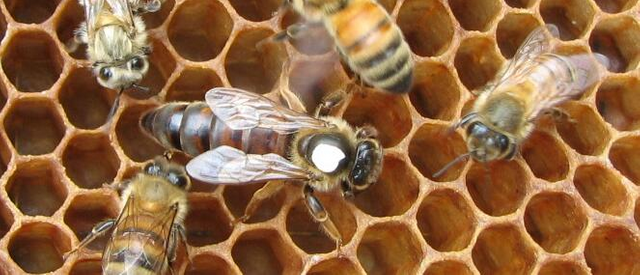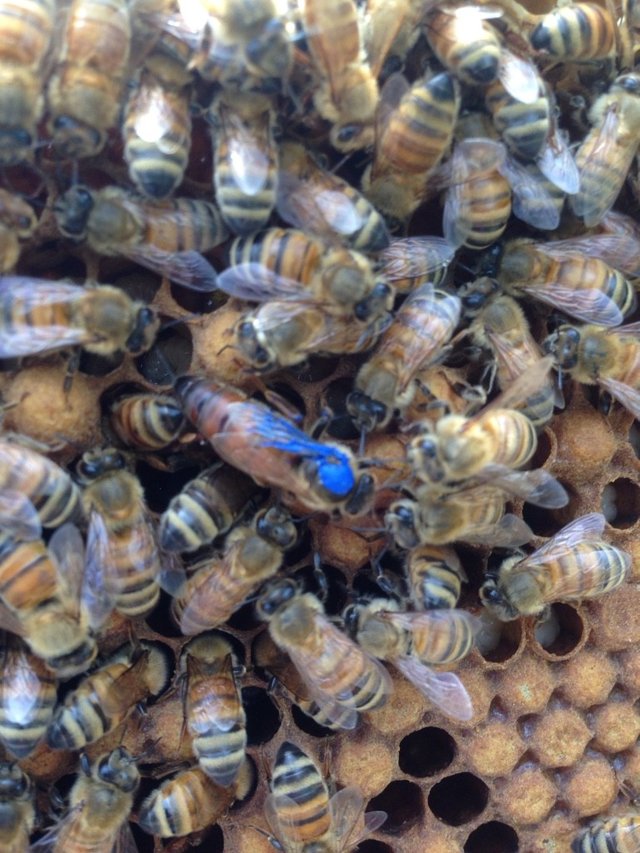How to Mark a Honeybee Queen
There are good reasons to have your queens marked, including:
- Ease in locating the queen during inspections.
- Confirm the hive hasn't swarmed.
- Confirm the queen hasn't been superseded.
Unfortunately, many folks don't have marked queens. Whether it not being an option when they purchased their queens, not wanting to pay the extra money to have it done, or they have raised their own queens.
For those that realize the benefit of having marked queens and would like to mark their queens, I have included a short demonstration video.
What does the color mean?
The color denotes the year the queen was born. There is an internationally accepted color sequence. Since queen bees do not live more than five years, the color code resets on the sixth year. Using this color code, one can easily tell the age of a queen. The color sequence goes like this:
| Color: | For Year Ending In: |
| White | 1 or 6 |
| Yellow | 2 or 7 |
| Red | 3 or 8 |
| Green | 4 or 9 |
| Blue | 5 or 0 |
There is a simple phrase used to remember the color sequence.
(W)ill (Y)ou (R)aise (G)ood (B)ees
Now if you are a small scale backyard beekeeper and keep good records, there is no reason to worry about the color coding. You are better off to pick a color that you find easier to spot in the hive and use it. Believe it or not, some colors are much easier to spot in a crowded hive. Personally I find white to be the easiest for me.
What to mark with?
There are a few options that can be used and some are better than others. Model paint such as Testors is quite common, but requires using some type of "applicator" to get the paint out of the tiny jar and onto the queens thorax. A stalk of grass or tiny stick is readily available in bee yards and often used.
I prefer to use a water-based paint pen such as POSCA brand. It can easily be carried in your pocket with little worry of leaking.
One caution when using a paint pen is to always release the pressure before marking the queen. It is often hot in the bee yard and the pens will build up pressure. If you don't release the pressure until you mark the queen, you stand the risk of pressurized paint spewing all over your queen and perhaps maiming her to the point of the bees rejecting her.
Another common marking method is to use White-Out. Although it is easy to apply and doesn't run like regular paint, it also does not last long. Worker bees can groom it off a queen with a matter of days if they are determined. I do not recommend using it. Why risk having a queen "un-marked" by the workers and then you mistaken her for a replacement queen?
Queen Marking Tools?
There are a few different types of queen marking tools available but I don't recommend using them. The basic principle behind these tools are to press the queen until she becomes immobile and then apply your marking. I find it very stressful on the queen to pin her down in such a manner and even more stressful on me trying to apply enough force to stop her from moving but not injuring her. You would be surprised how much force it takes.
I strongly recommend doing it with your bare hands where you have better control over the amount of force to use. It is a good idea to practice on drones until you feel comfortable with the process.
Beekeep On!
@bushkill




This is excellent information. I've saved this for future reference. I hope to be getting bees for the first time in the spring.